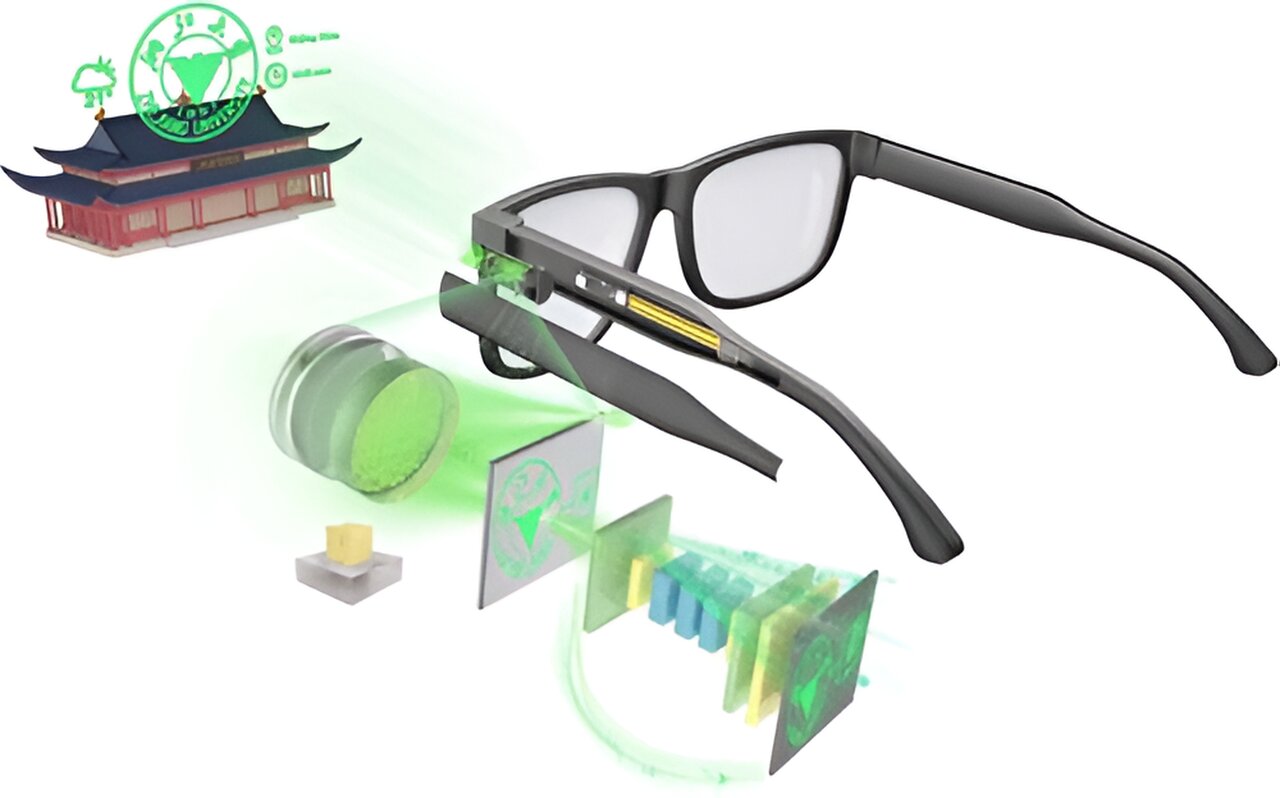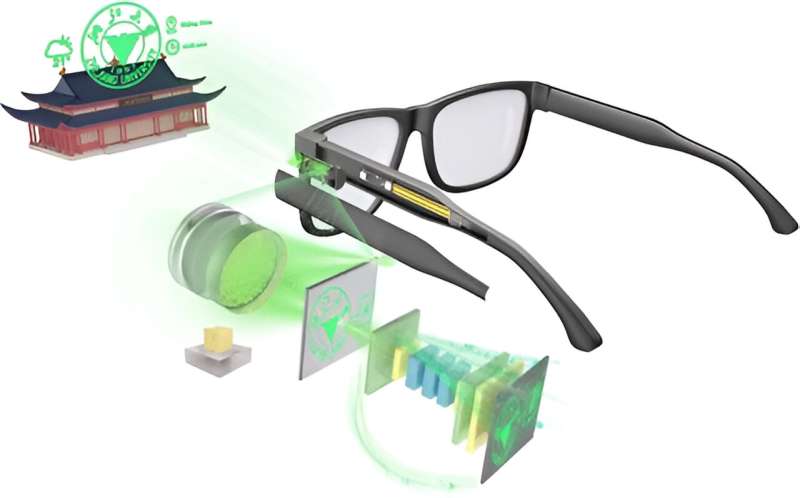

Augmented reality (AR) takes digital images and superimposes them onto real-world views. But AR is more than a new way to play video games; it could transform surgery and self-driving cars. To make the technology easier to integrate into common personal devices, researchers report in ACS Photonics how to combine two optical technologies into a single, high-resolution AR display. In an eyeglasses prototype, the researchers enhanced image quality with a computer algorithm that removed distortions.
AR systems, like those in bulky goggles and automobile head-up displays, require portable optical components. But shrinking the typical four-lens AR system to the size of eyeglasses or smaller typically lowers the quality of the computer-generated image and reduces the field of view.
Youguang Ma and colleagues may have found a solution for condensing the technology. They combined two optical technologies—a metasurface and a refractive lens—with a microLED screen (containing arrays of tiny green LEDs for projecting images) to create a compact, single-lens hybrid AR design.
Their display’s metasurface is an ultrathin, lightweight silicon nitride film etched with a pattern. The pattern shapes and focuses light from the green microLEDs. Then, a black-and-green image forms on a refractive lens made from a synthetic polymer, which refines the image by sharpening and reducing aberrations in the light.
The final image is projected out of the system and superimposed onto an object or screen. To further enhance the resolution of the projected image, Ma and the team used computer algorithms to identify minor imperfections in the optical system and correct them before light leaves the microLED.

The researchers integrated the hybrid AR display into a pair of eyeglasses and tested the prototype’s performance with computer image enhancement. Projected images from the one-lens hybrid system had less than 2% distortion across a 30° field of view—image quality that’s on par with current commercial AR platforms with four lenses. The researchers then confirmed that their computer preprocessing algorithm improved a reprojected AR picture of a red panda.
The reprojected red panda was 74.3% structurally similar to the original image—a 4% improvement from the uncorrected projection of the image. With additional development, the researchers say the platform could extend from green to full color and enable a new generation of mainstream AR glasses.
More information:
Qikai Chen et al, Hybrid Meta-Optics Enabled Compact Augmented Reality Display with Computational Image Reinforcement, ACS Photonics (2024). DOI: 10.1021/acsphotonics.4c00989
Provided by
American Chemical Society
Citation:
Shrinking augmented reality displays into eyeglasses to expand their use (2024, September 25)
retrieved 25 September 2024
from https://phys.org/news/2024-09-augmented-reality-displays-eyeglasses.html
This document is subject to copyright. Apart from any fair dealing for the purpose of private study or research, no
part may be reproduced without the written permission. The content is provided for information purposes only.